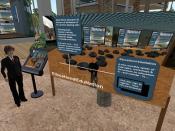Standard of living
Singaporeans enjoy a high standard of living for the past few years in 1997 , the labour force comprised 64.2% per cent of the population aged 15 years and over. The per capital indigenous Gross National Product was $36,422.10 . About 86 per cent of the population lived in Public flats. And for every 100,000 people, there were 36 public buses, 15 doctors and 3050 residential telephone lines.
Income of each household increase.
Increase in the demand for goods and services.
A better lifestyle.
Better Education facilities / Better Education Level.
More Public Transportation
More housing were built
Labour force increase
Smaller families
1.1 Income
Income of each family increase due to the increase of standard of living. People demand for better services, better quality of goods and higher standard of living.
1.2 Demand for good and services
Since the standard of living increase, manufacturer have to make
sure that the goods are in a higher quality.
For example, the
meats sold in the supermarket are imported from overseas and
they have to make sure that the meats are fresh. Purchaser are
willing to pay any reasonable price as long as the meat they
purchase are fresh .
1.3 Lifestyle
People life style had changed. They are much more aware of what is happening in their everyday life. They are conscious about their health, the food they consume, the clothes they wear etc.
1.4 Education
Singapore's education system aims to provide each individual with a
balance education , and to nurture good citizens by developing one sense
of responsibility to family, society and country. The education system is
flexible and caters to every child's abilities, interests and aptitudes to
help them develop their fullest potential. It focuses on the development
of human resources to meet Singapore's need...


